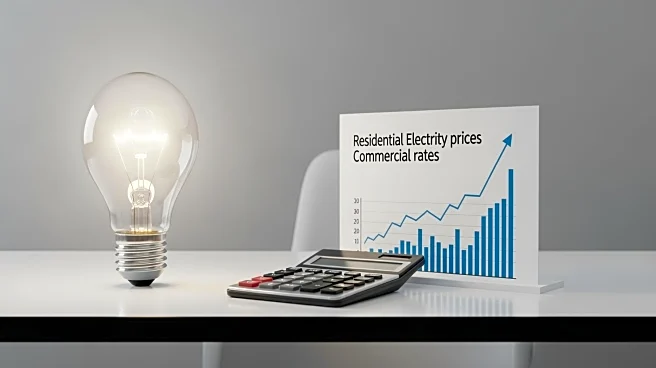What's Happening?
A report from the Lawrence Berkeley National Laboratory reveals that residential electricity prices have increased more rapidly than commercial and industrial rates from 2019 to 2024. Residential prices rose
by 27% to 16.5 cents/kWh, while commercial and industrial prices increased by 19%. The report attributes the rise to factors such as state energy policies, wildfire-related costs, and the growth of net metered solar. States with renewable portfolio standard programs and shrinking customer loads saw significant price increases. The report also notes that investor-owned utilities have higher and faster-rising prices compared to public power utilities.
Why It's Important?
The surge in residential electricity prices has significant implications for consumers, particularly those in states with high energy costs. As electricity becomes more expensive, households may face increased financial strain, prompting them to seek energy-efficient solutions or alternative energy sources. The report highlights the impact of state policies on electricity prices, underscoring the need for careful consideration of energy regulations and their effects on consumers. The findings may influence future policy decisions and encourage states to explore strategies for balancing renewable energy goals with affordability.
What's Next?
The report may lead to discussions among policymakers, utilities, and consumers about the factors driving electricity price increases and potential solutions. States may consider revising energy policies to mitigate price hikes while supporting renewable energy initiatives. Utilities may explore ways to enhance efficiency and reduce costs, potentially through investments in technology and infrastructure. Consumers may seek to reduce their energy consumption or invest in solar panels to offset rising costs. The report could also prompt further research into the relationship between energy policies and electricity prices.
Beyond the Headlines
The report raises questions about the long-term sustainability of current energy policies and their impact on consumers. It highlights the need for a balanced approach to energy regulation that considers both environmental goals and affordability. The findings may encourage a reevaluation of net metering programs and their effects on electricity prices, prompting discussions about the future of renewable energy integration.











